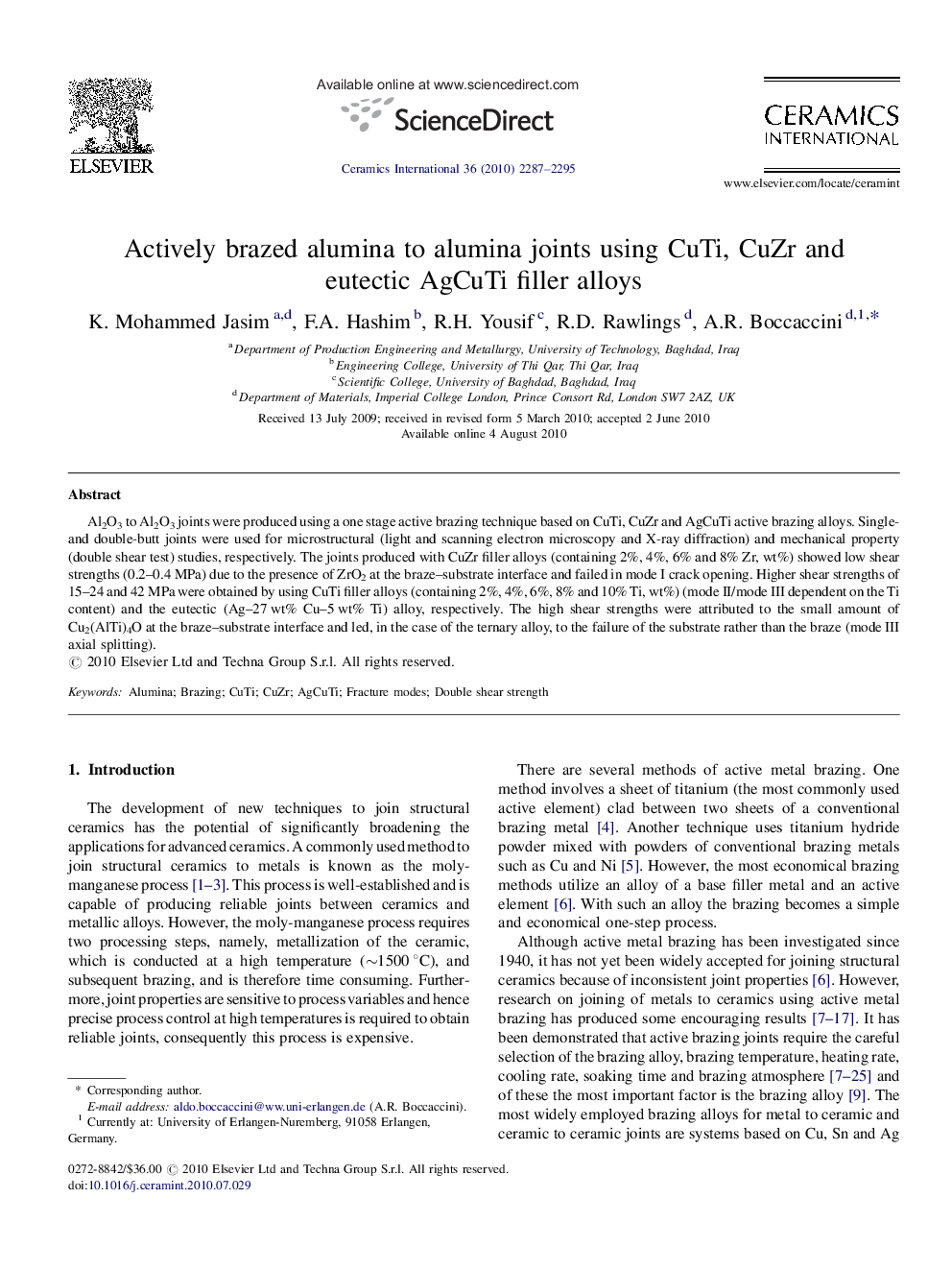| Article ID | Journal | Published Year | Pages | File Type |
|---|---|---|---|---|
| 1464746 | Ceramics International | 2010 | 9 Pages |
Al2O3 to Al2O3 joints were produced using a one stage active brazing technique based on CuTi, CuZr and AgCuTi active brazing alloys. Single- and double-butt joints were used for microstructural (light and scanning electron microscopy and X-ray diffraction) and mechanical property (double shear test) studies, respectively. The joints produced with CuZr filler alloys (containing 2%, 4%, 6% and 8% Zr, wt%) showed low shear strengths (0.2–0.4 MPa) due to the presence of ZrO2 at the braze–substrate interface and failed in mode I crack opening. Higher shear strengths of 15–24 and 42 MPa were obtained by using CuTi filler alloys (containing 2%, 4%, 6%, 8% and 10% Ti, wt%) (mode II/mode III dependent on the Ti content) and the eutectic (Ag–27 wt% Cu–5 wt% Ti) alloy, respectively. The high shear strengths were attributed to the small amount of Cu2(AlTi)4O at the braze–substrate interface and led, in the case of the ternary alloy, to the failure of the substrate rather than the braze (mode III axial splitting).
